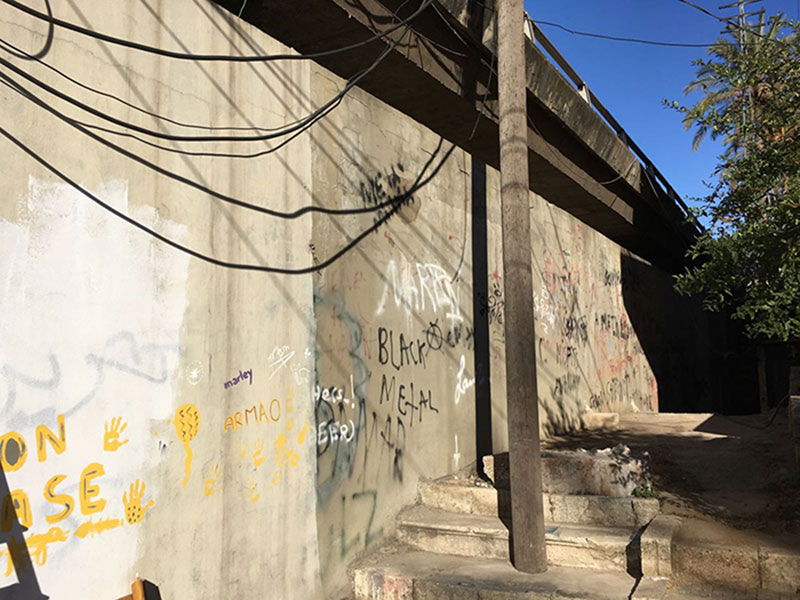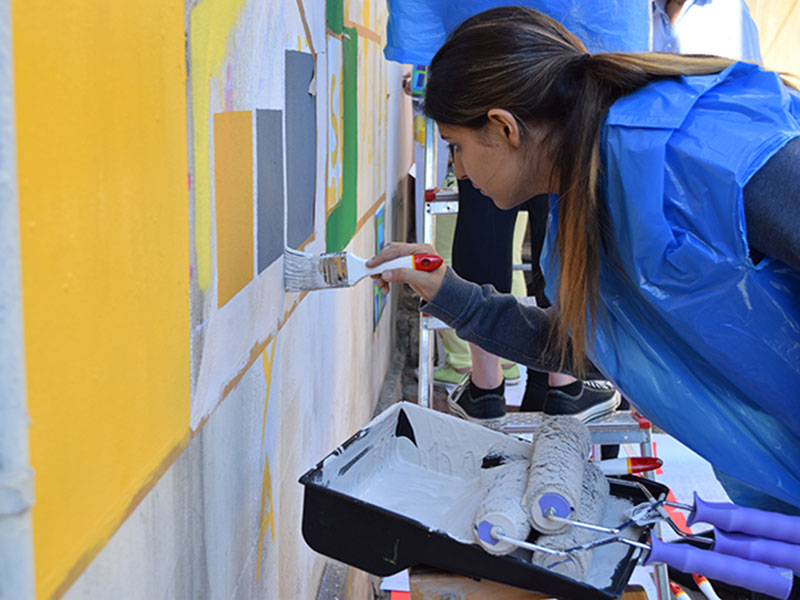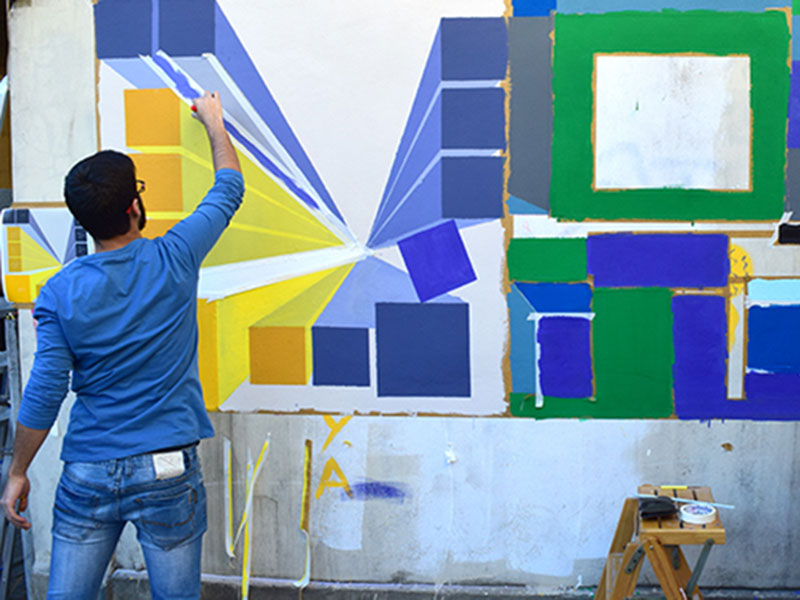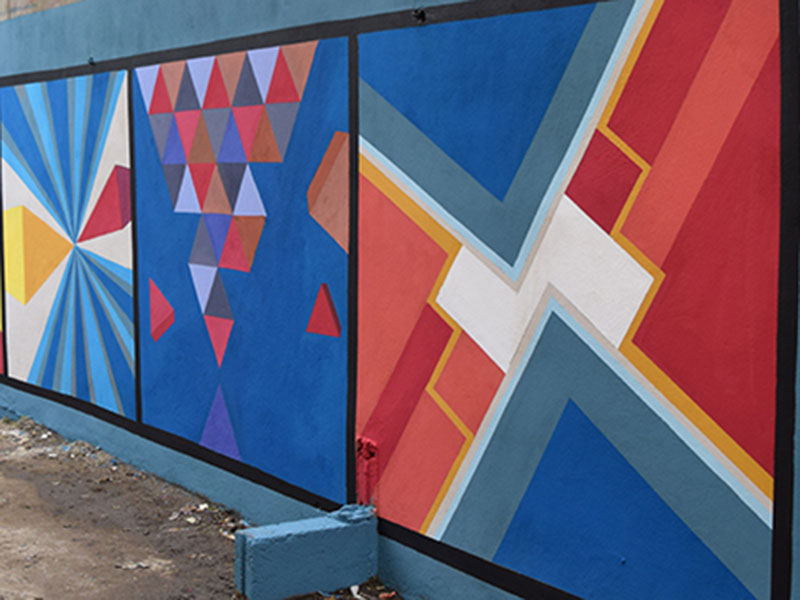The Art of Regeneration
These days the Lebanese American University has taken on the task of metamorphosis. The university’s School of Architecture and Design adopted the space of a Byblos bridge as a canvas. “This project was inspired by a review of the foundation program,” Melissa Plourde Khoury said in an interview, continuing, “The reviewers questioned: How can foundation year students see that what they learn in this first year is applicable outside the classroom context and within real-world settings.”
Located in an alleyway beside the Moon Phase shop close to Hage supermarket, the project’s intention was to promote the practice of art and design, as well as to beautify and enhance the town whilst simultaneously giving students the opportunity to administer themselves in a real-world project. “I hope to help the students be part of a community service that proves art and design can transform our urban spaces from neglected and vandalized to meaningful and vibrant through a creative and collective vision, hard work and some paint.” Khoury asserted.
The work is a collage of the students’ geometric compositions, which were created as part of the Design Studio IA’s foundation program. Four compositions were chosen by a jury made up of Foundation director Silia Abou Arbid and art director and work-shop facilitator for Dihzahyners, Lana Chukri. The winning selections were chosen based on their composition, use of color and constancy to the principle of design as well as its feasibility to be translated into a mural.
The event consisted of a three-day workshop, coordinated by Dihzahyners, an organization dedicated to the artistic regeneration of walls, stairs and streets, best known for their work on the stairs in Mar Mikhael. Supervised by Ms. Ruth Maalouf and Melissa Plourde Khoury, the project’s premise was to convert this barren and tarnished bridge wall into an inspiring artistic expression.
When asked what the project hopes to achieve, Khoury conveyed, “My goal is for this kind of activity to take place on an annual basis,” continuing to express that, “One wall at a time, our students can make a difference within different communities in Lebanon.” Khoury communicated that, “art set within even the most mundane spaces can uplift and alter our everyday experiences.”
“Everyone has been incredibly enthusiastic, supportive and cooperative, it is a great feeling to work with people that really care about the project and want it to succeed.” Khoury concluded.






